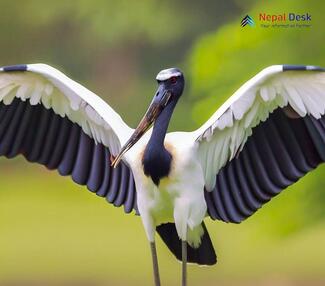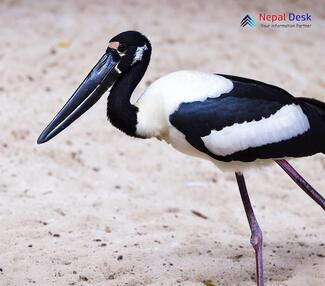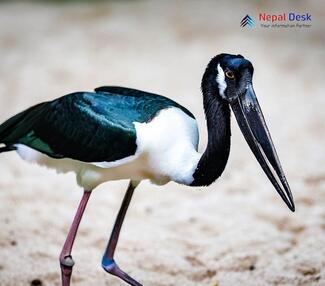As a bird enthusiast, you might have come across a variety of fascinating species. However, some birds stand out due to their unique features and captivating beauty. One such avian marvel is the Black-necked Stork (Ephippiorhynchus asiaticus), found in some regions of Nepal. Their striking appearance and intriguing behavior make them a noteworthy subject for nature lovers worldwide. In this blog post, we'll uncover the mysteries surrounding this magnificent bird and explore its profile in detail.
An Overview of the Black-Necked Stork
The Black-necked Stork is a large wading bird with a stunning appearance. Often nicknamed "jabiru," it is characterized by its black neck, head, and bill, contrasted with a white body and vivid red legs. The iridescent blue-green sheen that covers its black feathers further adds to the allure of this beautiful bird. With a wingspan of over 2 meters, the Black-necked Stork is an imposing sight when in flight.
Habitat and Distribution in Nepal
Nepal is home to diverse wildlife, thanks to its unique ecosystems and landscapes that are spread across various elevations. The Black-necked Stork thrives in areas where wetlands and grasslands meet, offering them ample opportunities for feeding on their primary prey—fish, amphibians, reptiles, and even small mammals.
Though not as widespread as some other species in Nepal, the Black-necked Stork can be spotted within protected areas like Shuklaphanta National Park and Chitwan National Park. Their elusive nature can sometimes make sightings rare; however, dedicated birdwatchers can encounter them during optimal times of the year based on their mating patterns.
Breeding and Behavior
The breeding season for the Black-necked Storks varies depending on their geographical location but generally falls between January and March in Nepal. Nests are made in tall trees, often near bodies of water, providing a safe environment for the young.
These monogamous birds form lifelong pair bonds and engage in elaborate courting rituals that include ritualized preening and bill-clattering. Once a good partnership is formed, both males and females work together to build the nest, incubate the eggs, and rear the chicks.
Conservation Status and Threats
The International Union for Conservation of Nature (IUCN) currently lists the Black-necked Stork as "Near Threatened" due to habitat loss and human disturbance. The primary threats to this species include deforestation, draining of wetlands, agriculture expansion, and pollution from pesticides.
Efforts are underway in Nepal to preserve the delicate habitats these birds depend on. Nature reserves such as Shuklaphanta and Chitwan have been established to provide a sanctuary where these avian wonders can flourish without human intervention.
In Conclusion
The Black-necked Stork (Ephippiorhynchus asiaticus) is just one example of Nepal's rich avian biodiversity. Its distinctive features, intriguing behavior, and scarce population make it a fascinating subject for bird enthusiasts and conservationists alike. As we continue to focus on preserving habitats and promoting eco-friendly practices, we can help protect these magnificent creatures for future generations to admire.




